QuestionQUESTION: Hi Karen, I'm going to be setting up a 100 or 110 gallon aquarium to transfer the residents of my experimental 10 gallon too, and others I have on the way.
I need to cut the cycling time as much as possible as I have very limited space.
I'll probably be using rain water but I need a product I can buy that will inroduce the bacteria for cycling into the ecology. I've seen some on-line, but need to know what you would recommend.
In this case would rain water be best to begin cycling as it already has some ammonia in it or should I spring for a "Britta" Pitcher, and filter tap water?
I could do that as well.
How long will it take to cycle with such a product?
Much obliged, Luis
ANSWER: Hi Luis,
Here's what you can do to easily cut cycling time in half (or maybe even less!)
What you do (and this is a technique used by many expert fish breeders when they need to setup a new tank right away) is you run several medium/large sponge filters on your established tank all the time, or at least for several weeks. Within that time, the sponge will be deeply colonized with beneficial bacteria. So when you setup your new big tank, you can take those sponge filters and move them into that to have an almost 'instant cycled' tank! But of course there are some simple precautions you must take to prevent problems that may occur. First, I wouldn't immediately stock your tank with a big group of large fish that produce a high bioload even with the sponge filters. If you are going to be having big fish then still try to stock to tank slowly if possible or start with little baby ones. If you are stocking with small fish like tetras or barbs then you are very likely perfectly fine to go ahead and stock the tank (while of course being reasonable) with all your planned/present fish and other aquatic life.
Either way, you'll still want to test your water daily for at least a week to watch for any ammonia spikes that may or may not occur. They probably wont with the cycled sponge filters present but it's better to know for the sake of your fish.
Later, after the tank has been well-established and you have ample biological filtration by means of another powerful filter running on your 100 or 110 gallon, you can slowly begin to remove the sponge filters if you don't want them. But they are great to have in your tank because of their ability to hold so much beneficial bacteria and if you were to ever need to setup a tank, you can just take one or two of your sponge filters from the main tank and drop them into the new tank for instant cycling.
As for how long to leave the sponge filters in your 10 gallon? Well, if this is a high bioload (waste producing) tank then a few weeks like 2-3 might be enough due to a large amount of bacteria rapidly multiplying due to the high waste content. But if it is a modestly stocked tank with a low bioload, then at least 3-4 weeks would be best. You can also transfer some of your 10gallon's gravel into the new tank if possible which will further 'seed' it with bacteria.
You can also buy beneficial bacteria in a bottle. While there are several brands available and they can do some good in helping out with cycling a tank. By far, "Bio-Spira" has been known to be the best reliable bacterial supplement out there. The only drawback is it is more expensive. But you cannot rely on bacteria additives alone but they can help. You'll still want to test your water at least everyday for a while until you are sure all is well with your new tank and fish.
As always, water changes are the best key to preventing stress and/or fish loss and you can also use a water conditioner that neutralizes ammonia/nitrite like Amquel+
It is not neccesary to use rain water in most aquariums. Fortunately, unless you are keeping very sensitive or wild-caught species that only thrive in acidic water, then most fish are very adaptable to varying degrees of pH and hardness. And many, many species of fish even spawn in it. After so many years of being farmed commercially, fish are very hardy and adaptable and usually it's best not to try to adjust their pH or water chemistry at all, because flucuations occur frequently and this results in a pH roller coaster and some very stressed fish.
Most all fish can adapt and thrive in your own plain tap or source water, and as long as it's treated with a water conditioner and they get regular frequent water changes, that is all most fish will ever need.
Beware that sometimes rain water may be polluted also.
Although it's fine to use the Britta pitcher for your tank. Again, it's usually not neccesary and might be a little much for a tank as big as a 100 gallon and up.
Just try your best with setting up your new tank, try to get some sponge filters bubbling away in your 10gallon as soon as possible to get a bacterial source going. Then once the sponge filters have been running in the already established tank(s) for a while then transfer them into your 100-110 gallon and move the 10gallon's fish into there also. They should do fine, but just make sure by testing the water as I've said before. Remember to stock slowly as always. If you don't get any ammonia readings a day or two after adding a group of fish you could likely go get another reasonably sized group. Just test your water frequently just to be sure.
I really hope this helps!
Best of luck with your BIG aquarium! What fish did you have planned for that tank?
Karen~
---------- FOLLOW-UP ----------
QUESTION: Hi again Karen,
Most of my fish are small, with the possible exception of 5 pleicos that I have as part of the cleaning crew.
The largest of them is 4 inches.
The rest are or will be about
10 pairs of limia vittata, (like mollies)
3 pairs of Rivulus Cylindraceus (killies)
Some Girardinus Metallicus (like guppies) maybe 5 to 10 pairs if I can get them.
6 small shrimp, and 4 crayfish.
It's not possible for me to go to the pet store until I go to actually buy the tank, so I can't get any other filters.
I do have the one hang-on filter running in the 10 gallon, and I can change the cartridges every so often storing the "dirty" ones in water if they can serve the purpose of the sponge filters, but if there is a product that will "infect" the whole thing quickly, I can spring for it.
I will be using a pond filter for the larger tank.
I can keep both tanks running for the time needed, but need to cycle it quickly to remove the smaller tank. Space is at a premium in that location of the yard (the tank is outdoors).
I can't use just plain tap water from here in Florida, I wont even drink it out of tap myself. It's so thick you can cut it. Filtered it tastes great though.
A product that will introduce the culture effectively would be the most feasible solution for my situation, if one exists. Let me know.
Thanks, Luis
AnswerHi Luis,
There are several products that claim to help start benefical bacteria fast. They are Bio-Spira which claims to be the fastest. Others are: Biozyme, Colonize, Stress Zyme. and Cycle. Try the Bio-Spira unless it is too expensive. It is a little expensive to me but is supposed to really work. I have only used the other cheaper ones.
Hope this helps,
Karen

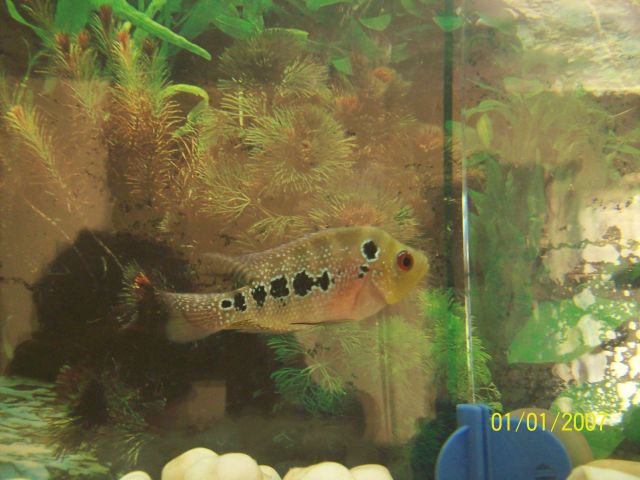 IS my flower horn male or female
Question
my flower horn
IS my flower horn male or femal
IS my flower horn male or female
Question
my flower horn
IS my flower horn male or femal
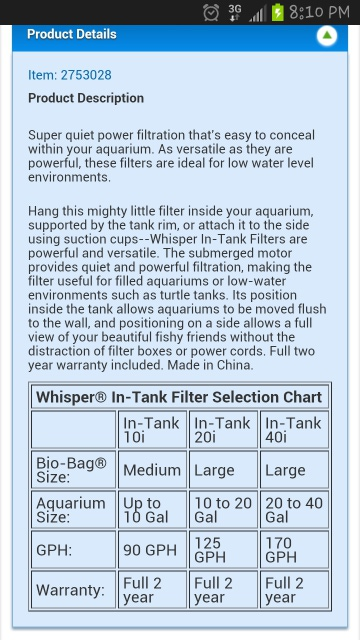 Filter
QuestionFilter
QUESTION: Hi Richard
I have a 10
Filter
QuestionFilter
QUESTION: Hi Richard
I have a 10
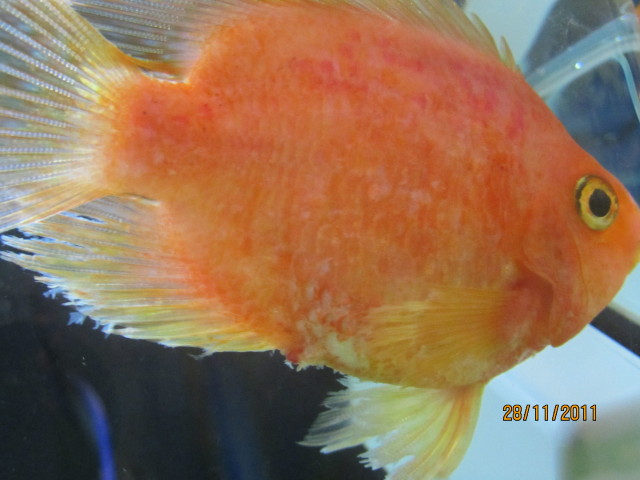 parrot fish disease
Question
parrot fish
i find out today the skin o
parrot fish disease
Question
parrot fish
i find out today the skin o
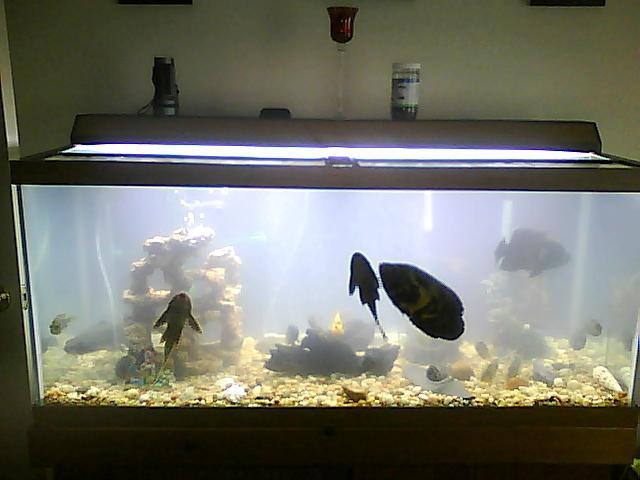 fresh water aquarium cloudly
Question
75 gal freshwater
I have a 75 gal fresh water
fresh water aquarium cloudly
Question
75 gal freshwater
I have a 75 gal fresh water
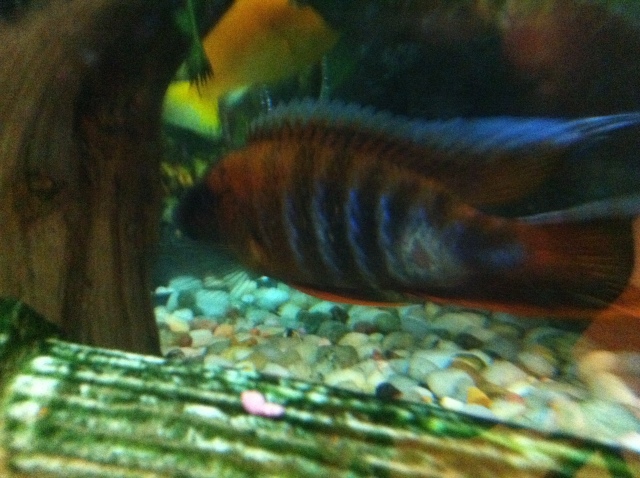 Sick cichlids! i dont want to lose them
QuestionQUESTION: Hello Renee, first off, thank you for
Sick cichlids! i dont want to lose them
QuestionQUESTION: Hello Renee, first off, thank you for